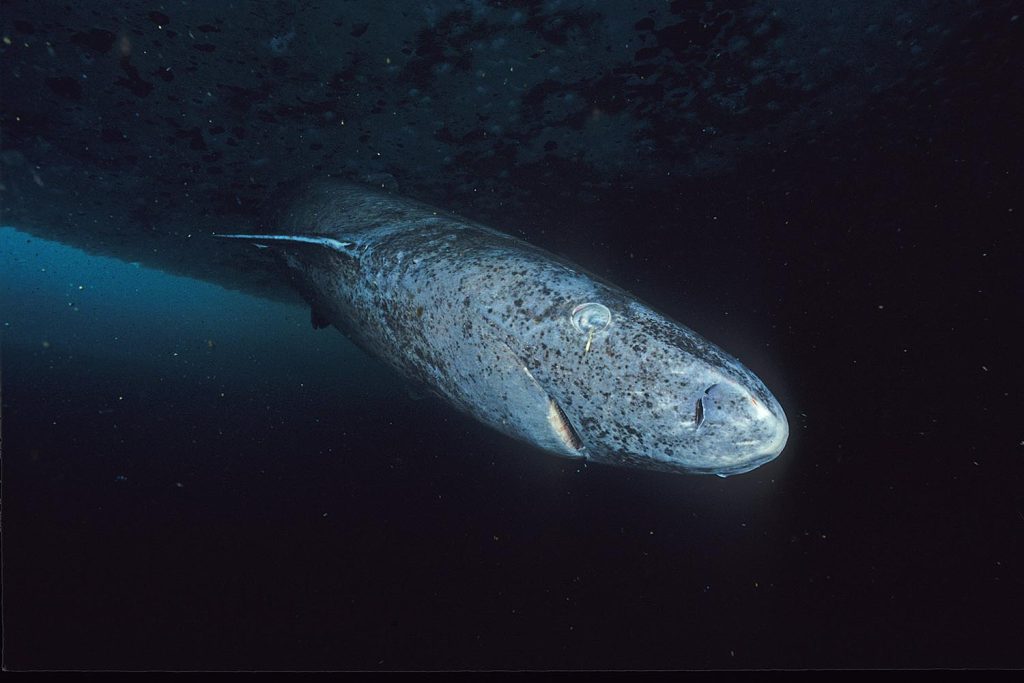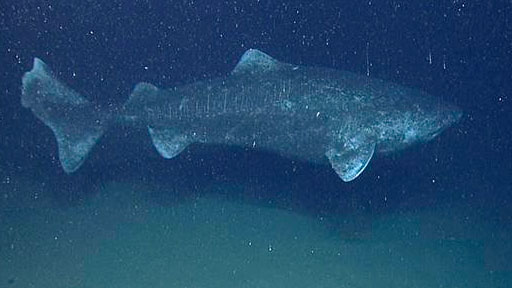

Photo byNOAA Photo Library, Public domain
Greenland sharks are the longest living vertebrates in the world — with lifespans possibly exceeding 300 years. Amazingly, females likely don’t start breeding until 150 years of age, research suggests.
The sharks are native to Arctic and North Atlantic waters, cruising at a typical depth of about 3,900 feet in waters that are just above freezing. The slow-moving behemoths grow to about 26 feet in length and can weigh more than 2,400 pounds. Researchers have estimated that they grow less than half an inch per year, which would help explain why they mature so slowly.
Due to their inaccessible habitats, these fish are hard to analyze in nature, but researchers were able to study 28 female Greenland sharks while working with the Greenland Institute for Natural Resources’ commercial fish monitoring program.
The ages of most bony fish can be determined by reading rings that develop in their cartilaginous structures, but Greenland sharks are ‘too soft’ — so scientists had to find another way. Using radiocarbon dating, they were able to study the proteins found in their eye lens tissue to estimate the sharks’ ages.
Researchers harvested eyes from 28 individual Greenland sharks caught as bycatch. The specimens represented a wide variety of ages, with the oldest ones estimated to be 335 and 392 years old, respectively. The results of the study were published in the journal Science.
A combination of the sharks’ late maturity, remote habitats, and a lack of biological research has caused concern for Greenland Shark populations among conversations, and the species is listed as “Near Threatened” by the IUCN. In addition to being inadvertently caught as bycatch during fishing operations, their habitats could be affected by climate change and human impact.
“If Greenland sharks live this long and don’t reproduce until they are 150 years old, their population is vulnerable to exploitation,” stated ecologist Aaron Fisk to National Geographic.
Check out a recent sighting of the shark in the video below. This was filmed at a depth of 225 meters close to Quqertarsuaq/Godhavn, Greenland.
See more of this shark up-close in the video below:




